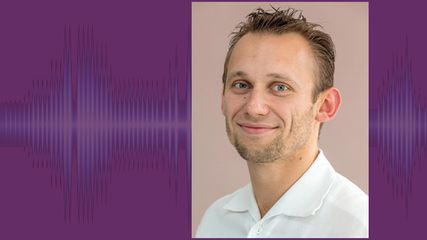
“Burnout syndrome – it is not you, it’s your profession”
Author:
Prof. Dr. Vesna Kesic
Faculty of Medicine, University of Belgrade;
Clinic of Obstetrics and Gynecology, University Clinical Center of Serbia
Belgrade, Serbia
E-Mail: vek1@mts.rs
First described almost 50 years ago, burnout is a psychological disorder that occurs in people doing demanding jobs and working incaring professions such as social workers, teachers and medical professionals. In the latest International Classification of Diseases, this condition has also been officially recognized as a health disorder, known as burnout syndrome.1 About one third of medical workers have a high degree of burnout syndrome. Among them, doctors are particularly exposed to a high degree of tension and responsibility at work, which can lead to exhaustion, psychological and/or physical problems, increase the risk of medical errors and reduce job satisfaction.
Keypoints
-
Burnout syndrome is physical, emotional and mental exhaustion that occurs after prolonged exposure to emotionally exhausting situations.
-
About one third of medical workers have a high degree of burnout syndrome.
-
Doctors who develop burnout syndrome have less empathy for their patients, provide reduced quality of care and make medical mistakes.
-
Prevention of burnout syndrome is extremely important and it requires constant efforts to not enter the state of burnout.
Definition of burnout syndrome
In medicine, it has long been recognized that chronic exhaustion occurs in people who are exposed to long-term and intense stress while working with patients. Stress in medicine derives from the nature of the work being done, which includes:
-
demanding clinical work, often longer hours than recommended
-
diagnostic dilemmas and making complex decisions
-
dealing with severe reactions and side effects of treatment, even with the death of the patient
-
breaking bad news
-
wrong diagnoses and mistakes in the proposed therapy
-
high expectations from the patient
-
dissatisfaction of the patient and their family
Together, these factors can lead to burnout syndrome. Burnout syndrome is the physical, emotional and mental exhaustion that occurs after prolonged exposure to emotionally demanding situations. According to Maslach, who first defined this syndrome, burnout has three interrelated dimensions:2
-
emotional exhaustion
-
depersonalization
-
lack of personal accomplishment
Emotional exhaustion
Prolonged exposure to stress is usually the main cause of emotional exhaustion and manifests itself through:
-
feeling exhausted
-
feeling of emotional emptiness
-
loss of enthusiasm for work
-
experience of failure, inability to improve
-
feeling helpless, trapped or defeated
-
excessive, unhealthy emotionality
Depersonalization
Depersonalization occurs when doctors treat patients indifferently, objectify them, and develop a negative attitude toward their colleagues and the profession. Inadequate interpersonal relations with colleagues and patients imply:
-
coldness in communication
-
insensitivity
-
distance
-
reservation
-
cynicism
-
treating people as objects
Lack of personal accomplishment
A lack of personal accomplishment is characterized by an individual’s withdrawal from responsibility and separation from work. The symptoms include:
-
personal experience of incompetence
-
negative self-evaluation
-
negative assessment of success in working with patients
-
lack of satisfaction with achievements at work
Each of these three psychological dimensions is associated with problems to adequately respond to tasks and with low productivity.
Frequency of burnout syndrome
Several studies have shown a high prevalence of burnout among physicians and found that at least one third of physicians have experienced some degree of burnout syndrome during their careers.
Through a systematic review of 182 studies that surveyed 109628 physicians in 45 countries, Rotenstein LS et al. determined that the overall prevalence of burnout syndrome was 34%. For individual components of burnout syndrome, the prevalence was 34,45% for emotional exhaustion, 26,8% for depersonalization, and 19,8% for a lack of personal achievement.3
For doctors, burnout begins during medical studies, continues during the period of specialization and finally matures in the daily life. Studies suggest that the prevalence of burnout among medical students ranges between 31% and 49,6%.4 At least one third of residents of different branches of medicine experience burnout, and about 12,5% are positive for all three dimensions of this syndrome.
In a study that included 4664 residents, it was determined that residents in general surgery, anesthesiology, obstetrics/gynecology and orthopedics had the highest rates of burnout syndrome (40,8%). The second group includes internal medicine, plastic surgery and pediatrics (30,0%), and finally, the least affected fields are otorhinolaryngology and neurology (15,4%). The overall prevalence of burnout for all specialties was 35,7%.5An interesting study shows that residents have at least one element of burnout more often than specialists, in 58% and 52% of the cases, respectively.6
Factors that contribute to the onset of burnout are numerous. The problems that doctors most often mention are:
-
too many bureaucratic tasks
-
being overloaded by increased bureaucracy and the increased documentation requirements of the electronic medical record
-
lack of respect from administrators/employers, colleagues or staff
-
too many hours at work
-
lack of control/autonomy over life
-
insufficient compensation/salary
-
increasing computerization in practice
-
lack of respect from patients
-
government regulations
Among all these stressors, the length of working hours is worth to be specifically mentioned. Long working hours are a significant risk factor for the occurrence of burnout syndrome. Compared to a 40-hour work week, the risk of developing this syndrome doubles when the weekly workload exceeds 60 working hours, triples when the number of hours exceeds 74, and quadruples after 84 hours of work per week.7
Consequences of burnout syndrome
The consequences of burnout syndrome are potentially very serious. These are:
-
reduced quality of services provided by healthcare workers to the patients
-
frequent absence from work (frequent sick leave)
-
leaving and changing jobs
-
compromised moral judgment
Health care workers who have burnout syndrome have less empathy for their patients, provide reduced quality of care, and may make medical errors, especially in medication dosing. Burnout syndrome is associated with many indicators of personality dysfunction: emotional instability, insomnia, increased use of alcohol, cigarettes and drugs, and marital and family problems.
By examining 116 gynecologists using Maslach’s questionnaire and other relevant tests, Iorga M et al. determined that 12,9% suffer from depression, and 35,3% have problems related to insomnia.8 Insomnia and depression have a major impact on all dimensions of burnout, especially on emotional exhaustion and depersonalization.
Individuals who experience burnout have mental health problems in 20% to 33% of cases, poor quality of life in 34%, disturbed intimate and social relationships in 30%, and suicidal ideation or problems with drug and/or alcohol abuse in 15%.9
Personality traits and dimensions of burnout are strongly related to alexithymia factors. In addition, people who show neuroticism and reactivityto stressful situations will have more problems identifying feelings and will experience greater emotional exhaustion. Also, the more difficult it is for a person to identify feelings, the higher their degree of depersonalization will be.
Prevention of burnout syndrome
Burnout is an endemic and systemic problem that needs to be addressed at national, organizational and individual levels. It must be kept in mind that medical professionals who provide treatment and care, when in the state of burnout syndrome, have a negative effect on patients and increase their vulnerability as well as the vulnerability of their families.
Prevention of burnout syndrome is extremely important and it requires constant efforts to not enter the state of burnout. Healthcare professionals must learn to take care of themselves, learn stress-management techniques, and learn to maturely deal with the difficult emotions that come with working with the most difficult patients. That is why it is very important that both health institutions and the state develop strategies for the prevention of burnout syndrome.
Health facilities should provide:
-
improvement of working conditions
-
flexible working hours or reduced working hours
-
adequate access to parking, refreshments and resistance training
-
engagement of motivated experts and mentors for assistance
-
organization of personal assistance programs
Personal help programs for burnout syndrome are diverse:
-
social support
-
counseling
-
relaxation exercises
-
practicing adaptive skills
-
psychotherapy and cognitive-behavioral measures
These interventions may contribute to reducing the incidence of burnout especially among stressful specialties such as general surgery, anesthesiology, obstetrics and gynecology, and orthopedics.
Conclusion
Burnout syndrome among healthcare workers has reached epidemic proportions. It is a phenomenon with far-reaching consequences that can be detrimental to both physicians and their patients. Most worrying are the insidious nature of this condition, its spread and its relationship to depression. Research on burnout among physicians has lead to improved awareness of physicians’ health and well-being as an important issue for the overall functioning of the health care system.
To date, there are few comprehensive solutions to effectively combat burnout syndrome. That is why the approach to prevention must be intensive and multifaceted, focused on the individual, departmental, institutional, and national level.
Literature:
1 International Classification of Diseases, Eleventh Revision (ICD-11), World Health Organization (WHO) 2019/2021. Online at https://icd.who.int/browse11 . Accessed on 25.11.2022 2 Maslach C, Leiter MP: Understanding the burnout experience: recent research and its implications for psychiatry. World Psychiatry 2016; 15(2): 103-11 3 Rotenstein LS et al.: Prevalence of burnout among physicians: a systematic review. JAMA 2018; 320(11): 1131-50 4 Romani M, Ashkar K: Burnout among physicians. Libyan J Med 2014; 9: 23556 5 Rodrigues H et al.: Burnout syndrome among medical residents: A systematic review and meta-analysis. PLoS ONE 2018; 13(11): e0206840 6 Atallah F et al.: Please put on your own oxygen mask before assisting others: a call to arms to battle burnout. Am J of Obstet Gynecol 2016; 215(6): 731.e1–e6 7 Lin RT et al.: Long working hours and burnout in health care workers: non-linear dose-response relationship and the effect mediated by sleeping hours - a cross-sectional study. J Occup Health 2021; 63(1): e12228 8 Iorga M et al.: Factors influencing burnout syndrome in obstetrics and gynecology physicians. Biomed Res Int 2017; 2017: 9318534 9 Ramirez AJ et al.: Mental health of hospital consultants: the effects of stress and satisfaction at work. Lancet 1996; 347(9003): 724-8
Das könnte Sie auch interessieren:
Highlights zu Lymphomen
Assoc.Prof. Dr. Thomas Melchardt, PhD zu diesjährigen Highlights des ASCO und EHA im Bereich der Lymphome, darunter die Ergebnisse der Studien SHINE und ECHELON-1
ASH 2020 – Highlights zu den aggressiven Lymphomen
Highlight-Themen der virtuellen ASH-Jahrestagung im Dezember 2020 waren an erster Stelle die Immunonkologika in all ihren Variationen, aber auch Beispiele für innovative Sequenztherapien ...
Aktualisierte Ergebnisse für Blinatumomab bei neu diagnostizierten Patienten
Die Ergebnisse der D-ALBA-Studie bestätigen die Chemotherapie-freie Induktions- und Konsolidierungsstrategie bei erwachsenen Patienten mit Ph+ ALL. Mit einer 3-jährigen ...


